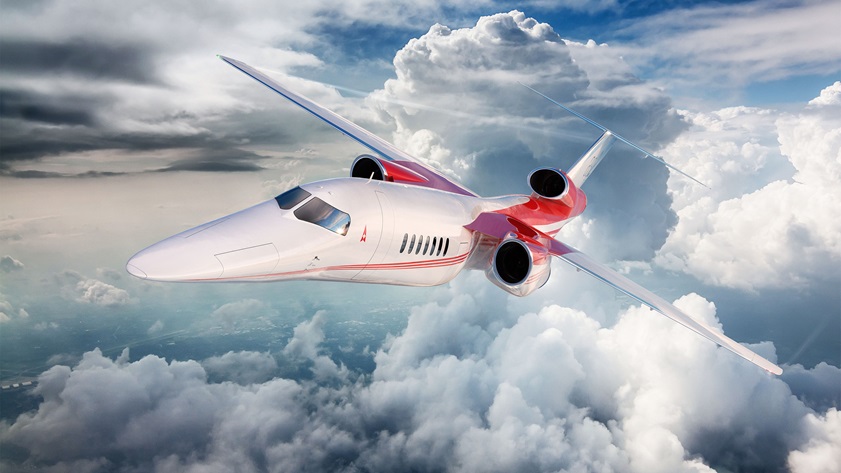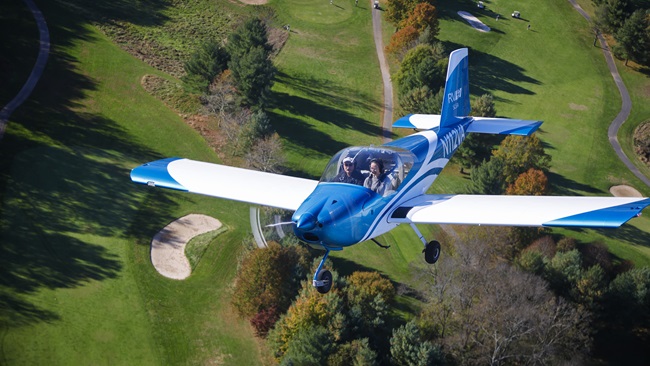COVID-19 downturn could be short-lived
Delayed business aircraft deliveries will catch up, Honeywell forecasts
Business aviation—like all segments of the aviation industry—has been impacted by the coronavirus pandemic. But the industry has been resilient and metrics are already improving, Honeywell Aerospace President and CEO Mike Madsen said December 2 in the company’s press conference that traditionally kicks off the National Business Aviation Association’s annual Business Aviation Convention and Exhibition.

Because of that pandemic, the annual conference was forced to pivot online as the NBAA GO Virtual Business Aviation Convention and Exhibition. The event concludes at 5 p.m. Eastern time on December 3.
While business aviation has been impacted, “it’s certainly been impacted less than we’ve seen in air transport,” with business flight hours down about 30 percent year over year. “We’re actually thinking Q4 is going to be down about 20 percent year over year, so it’s starting to improve.” Honeywell estimates air transport hours to be down 50 percent on a full-year basis. Corporate aviation has been significantly impacted, down 40 percent year over year—an effect of both COVID-19 and the economic impact of the health crisis, Madsen said. Fractionals are down about 23 percent year over year.
Personal flying is improving more quickly than business flying, and domestic air transport is improving faster than international, he noted. “There’s been some migration of travelers from first-class cabins to charter and fractionals.”
Aircraft deliveries also are down. “No real surprises here. Every segment’s down year over year,” Madsen said, adding that large-cabin and ultra-long-range aircraft are affected less than midsize models—with smaller aircraft affected the most. “Five-year purchase plans are unchanged,” he said, indicating that many delayed deliveries will shift toward the end of that five-year window.
“Long-range forecasts to 2030 still indicate about 7,300 new business aircraft during that period,” said Madsen. “The strongest segments for growth over the next 10 years, we expect to see in the super-midsize and large-cabin aircraft.”
Customers want to see longer range capabilities in smaller aircraft, which Madsen called “a common theme.” To help get there, in addition to continued upgrades of Honeywell’s HTF engine family, the company is working on a new centerline engine that’s bigger than the HTF7000 and will be able to support ultra-long-range capability for super-midsize aircraft. “We do see this migration to larger aircraft. Simply said, we’re going to need a larger engine and we’re going to continue to participate in that space.
Supersonic aircraft also are on the horizon, Madsen said. “I think they’re coming and I think business aviation is where you’ll see this. You’re not talking Mach 1.1 or 1.2; if you’re going to go supersonic, you’ve got to go Mach 2 plus.” Once you overcome sonic booms and other technical challenges of supersonic flight, additional speed is a much smaller obstacle, he explained. Honeywell has partnered with Aerion Supersonic, but progress has been slowed by the pandemic.
Compact fly-by-wire systems will bring large-aircraft capabilities to Part 23 business and general aviation, as well as the nascent electric vertical takeoff and landing and urban air mobility space. “The weight savings available on an aircraft like that are significant,” he commented.
Advanced avionics will feature more open software architecture and flexible connectivity, to speed upgrades and enhancements. “The pace of change continues to accelerate,” Madsen said. So will the implementation of systems like Garmin’s Autoland. “We’re looking at systems like that for all classes of aircraft in which we participate,” for safety and reduced pilot workload.
Madsen said Honeywell remains committed to the Part 91 space and the BendixKing product line, and is investing in cockpit systems outside BendixKing. Its new Micro Power Unit will provide ground power to small to midsize jets and turboprops that previously did not have practical ground power unit options. And the company sees a future in hydrogen fuel cells. “We see them as a replacement for or companion to batteries. I think you’re going to see that technology on business aircraft in the not too distant future.”


